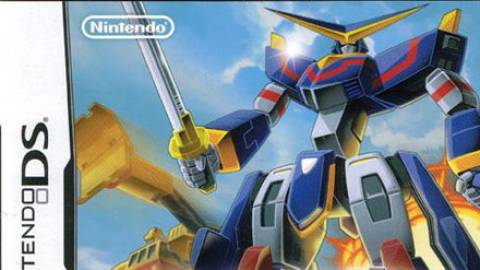Overview
Chou Soujuu Mecha MG is a Japan-exclusive game for the Nintendo DS released in 2006 that revolves around mech combat. Not unlike Capcom's infamous Steel Battalion series, players must manually operate each robot by using the touch screen as a control panel while still paying attention to the action as it unfolds on the upper screen, with the only non-touch screen controls generally being the directional pad/face buttons for lateral movement and rotation, as well as the shoulder buttons for camera control. Furthermore, each of the 100-plus different sorts of robots that can be collected and piloted in the game feature different control methods and features, making different types suitable for different sorts of missions.
Gameplay
Chou Soujuu Mecha MG's gameplay is broken up into two main phases. Outside of missions, the player can travel to set points on the overworld map, with the various points being used for story progression, mech purchases and upgrades, and mission triggers. Shops exist that enable the player to either buy new mechs that can be used in missions or parts that can supplement an existing mech's abilities, with the currency that's used to purchase such things being accrued by successfully completing missions. Each of the shops focuses on a specific type of mech, each of which have their own strengths and weaknesses. New mechs can also be unlocked at the player's headquarters by collecting blueprints from missions and then paying a fee to have them constructed.
During missions, the player is always inside the cockpit of whichever mech they've chosen to pilot prior to deploying. The top screen features a third-person view of the level, while the bottom screen features a dedicated control panel that the player must make constant use of during the mission. The specific features that are present on the control panel greatly differ depending on the mech that's being piloted, which also affects how they generally control. A sword-wielding mech, for instance, requires the player to directly manipulate the orientation of arms and create slashing motions manually in order to attack, whereas one that shoots arrows forces the player to draw back on the bow with the bottom screen while aiming with the top screen. Some mechs also feature multiple modes that can be triggered at will and have different functions depending on the mode. Despite these sorts of mechanical differences, most of the mechs have some basic abilities like the ability to pick up objects and buildings in the levels, although the actual implementation still depends on the mechs themselves. Each mission also has four difficulty levels and can be repeated multiple times in order to accumulate more money and items.
Mech maintenance also plays a prominent role both inside and outside of levels. During missions, a heat gauge is always present on the top screen that indicates the general stress levels that the machinery inside the mech is experiencing. Doing things such as swiftly flailing the arms or shooting rapidly builds up heat and if it tops out, the mech is forced into an emergency cooldown mode in which most functions outside of movement are restricted, although even walking speed is reduced heavily while in that state. To avoid that, the player has to deliberately time their movement and actions such that the mech is allowed to cooldown naturally, the speed of which is faster than when the mech overheats. Additionally, using the same mech across multiple missions also results in it accruing general wear and tear. Should a given mech be sufficiently used, it'll be temporarily decomissioned so that it can undergo repairs for a few missions, forcing the player to make use of a different mech in the meantime. However, a mech only takes wear and tear if it successfully completes a mission; there are no consequences if the player chooses to quit a mission without finishing it.

 Nintendo DS
Nintendo DS
